Although tensile structures are certainly complex elements of our architectural vocabulary, they can be as simple as a tent, where poles and ropes pretension the membrane or fabric. The technical definition is a structure that carries only tension throughout the various elements without bending or compression, which makes tensile structures suited for roofs as an easy and inexpensive way to span long distances. While these systems are often used in roofs and pavilions, architects are finding more and more ways to apply tensile designs.
Frei Otto, the 2015 Pritzker Prize Laureate, championed the use of tensile designs, pushing the boundaries through pavilions, multipurpose venues, and even an Olympic stadium. No doubt his work influenced many of the ideas and approaches in the following examples of tensile façades being created for projects both real and imagined. These projects explore the limits of tensile constructions, looking at their use as flexible and adaptable sun shades, durable surfaces for protection, and translucent scrims to expose buildings to light and exterior views. Each one represents a different way of expanding our understanding of tensile design at a variety of different scales, from a garden to a skyscraper, all across the world.
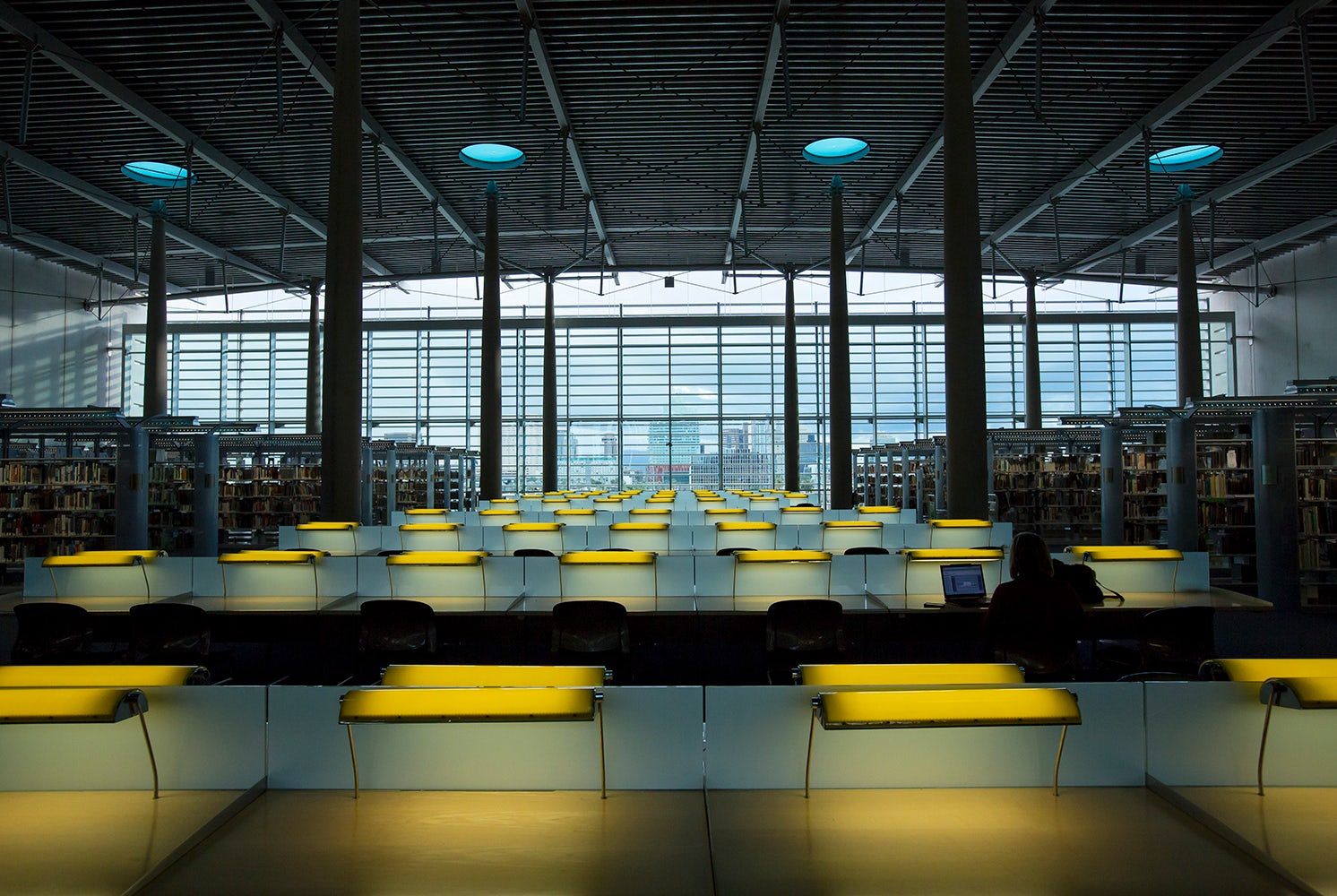
© Jeff Green Photography
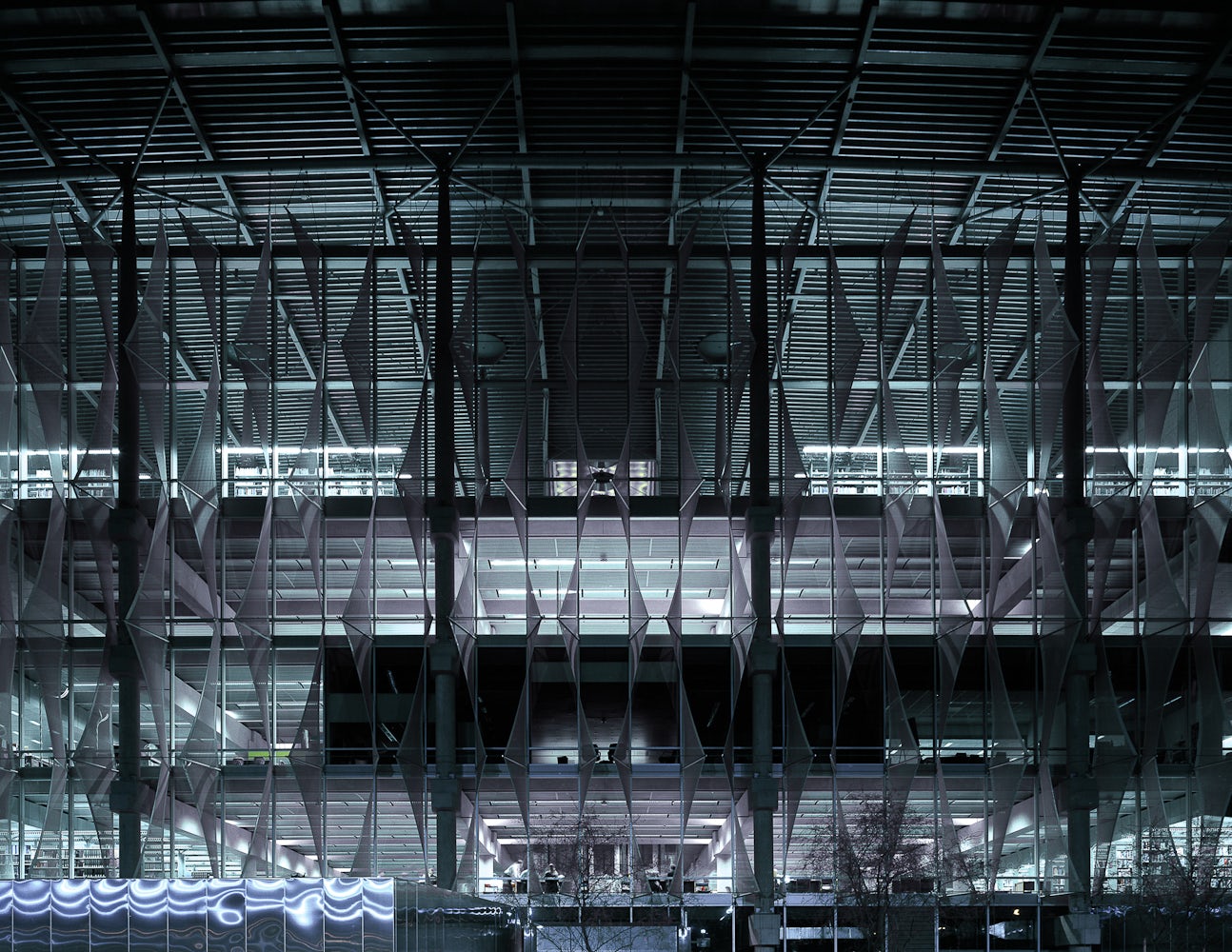
© Jeff Green Photography
The Phoenix Central Library by DWL Architects and Will Bruder, Phoenix
The Phoenix Central Library was designed using a roof tensegrity system created by Buckminster Fuller. It also features a tensile “shading sail” façade to respond to the Sonoran Desert climate. The library stands as an iconic building in Phoenix, one that carefully articulates a relationship between structure, light, and environment.

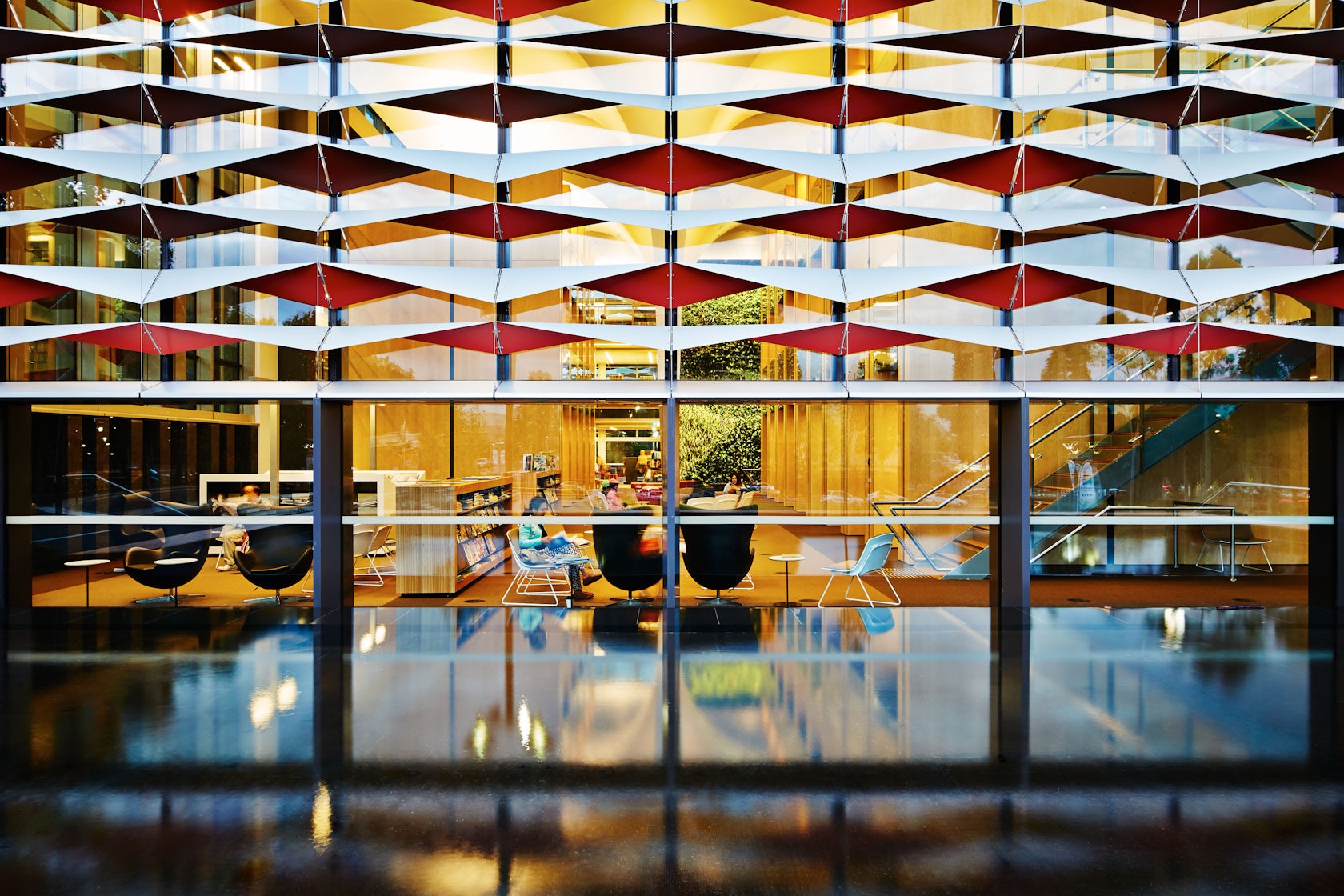
© The Orchard Studio
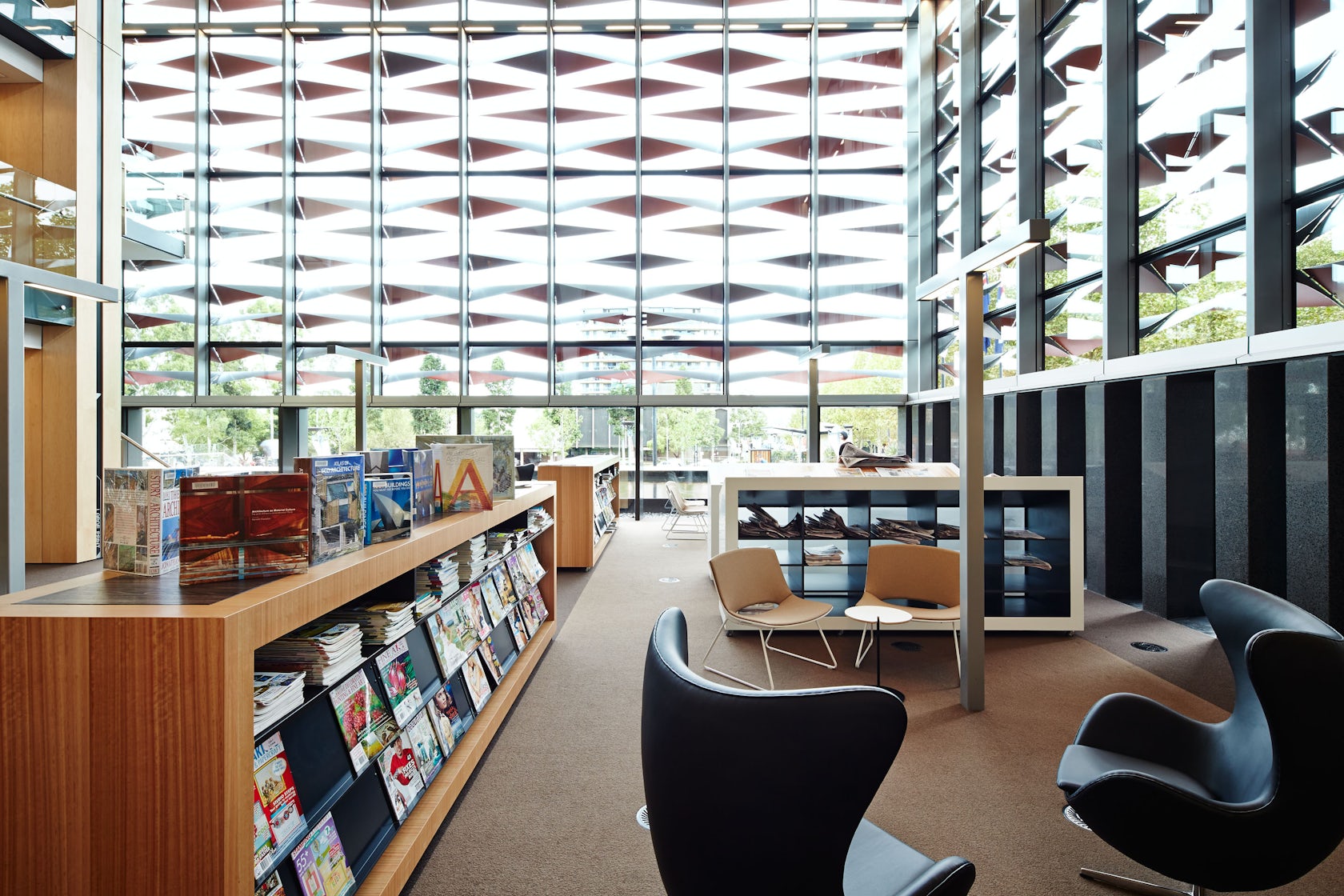
© The Orchard Studio
Bankstown Library and Knowledge Centre by Francis-Jones Morehen Thorp (FJMT), Bankstown, Australia
Combining sustainable design and a louvre façade system, the Bankstown Library and Knowledge Centre is an adaptive reuse of the existing Bankstown Town Hall. With a simple rectilinear form, the Library includes a colorful sun-shading façade comprised of louvres that twist and fold. The design establishes a distinct architectural character while expressing intricate details.
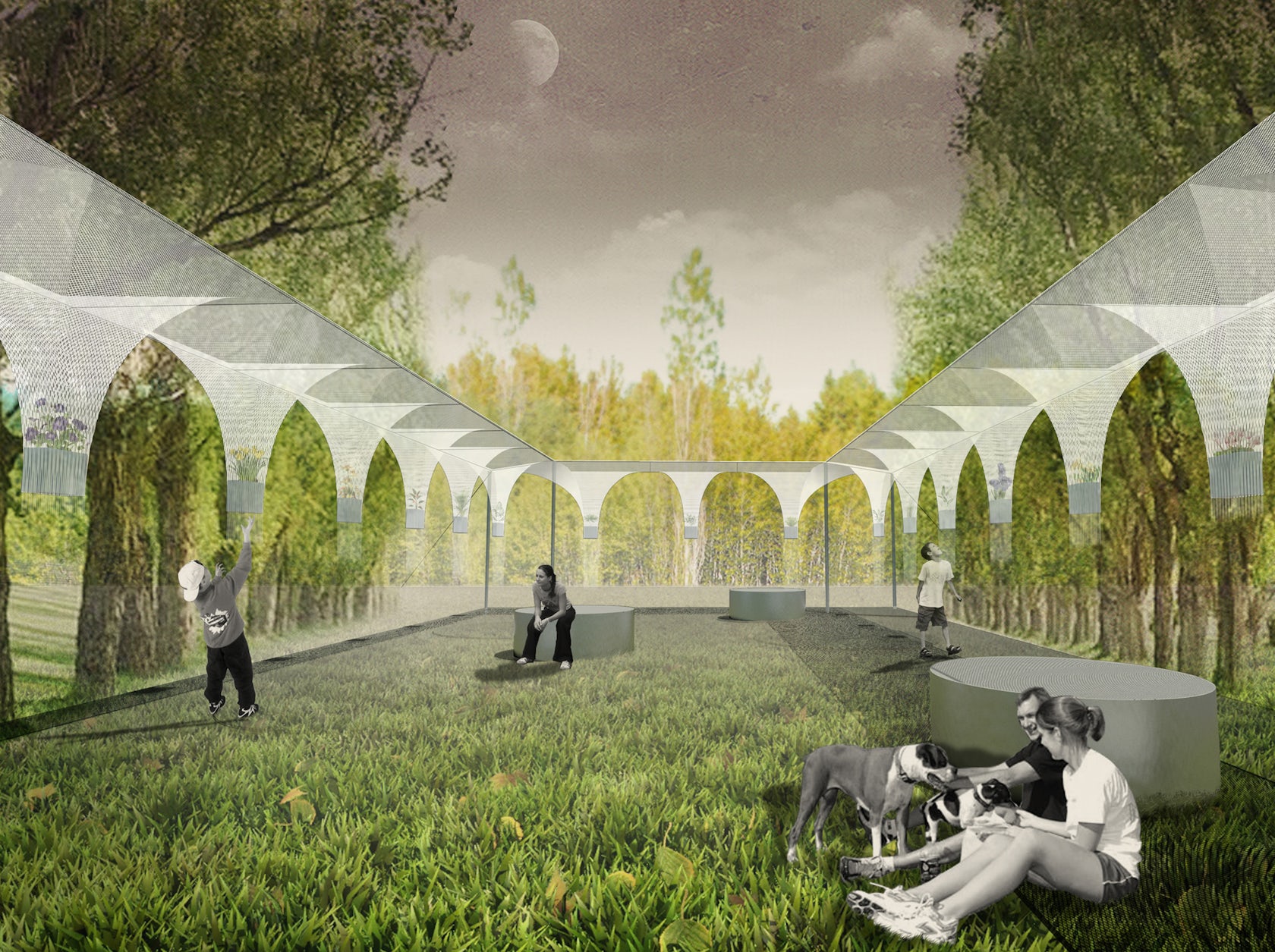
© The Open Workshop
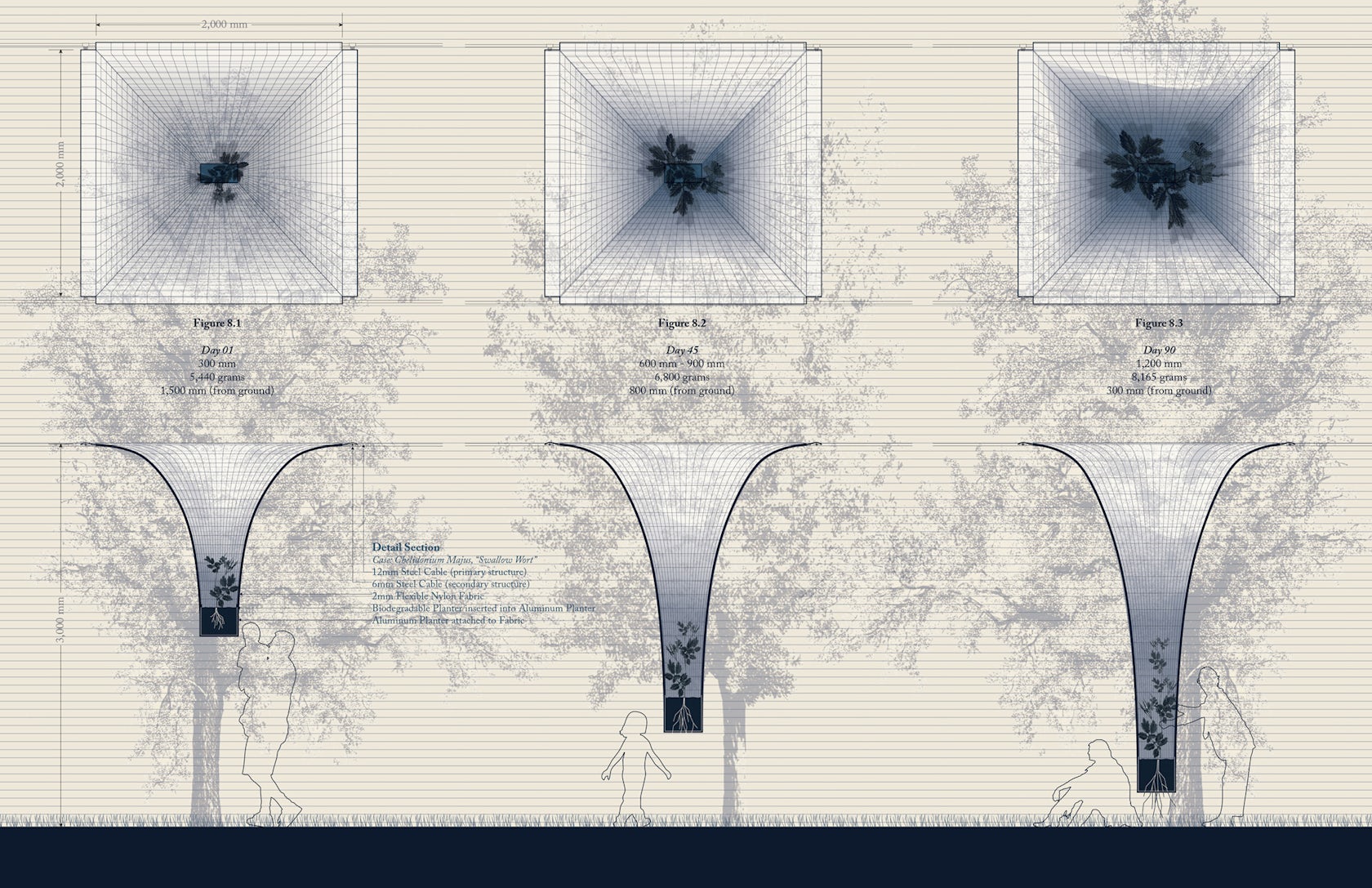
© The Open Workshop
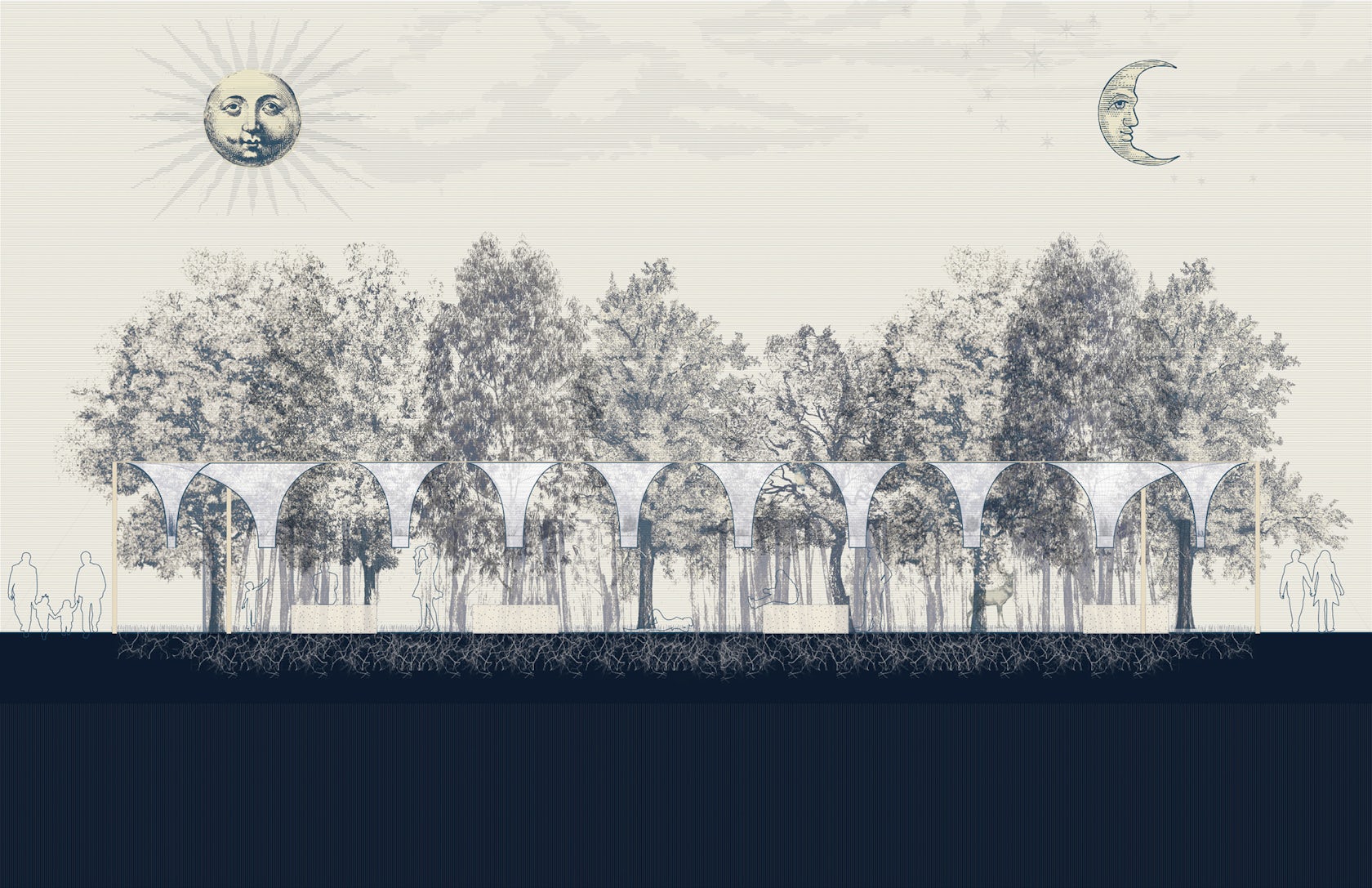
© The Open Workshop
The Garden of Displaced Roots by the Open Workshop, Québec, Canada
A speculative proposal that examines the relationships of invasive plant species, this project includes a tensile façade structure that houses plants. As time passes, the various plants grow and the tensile structure stretches, bringing the invasive species closer to the ground where they pose a threat. It is the tensile design and exhibition of these plants that allows cultural and critical dialogs to emerge.
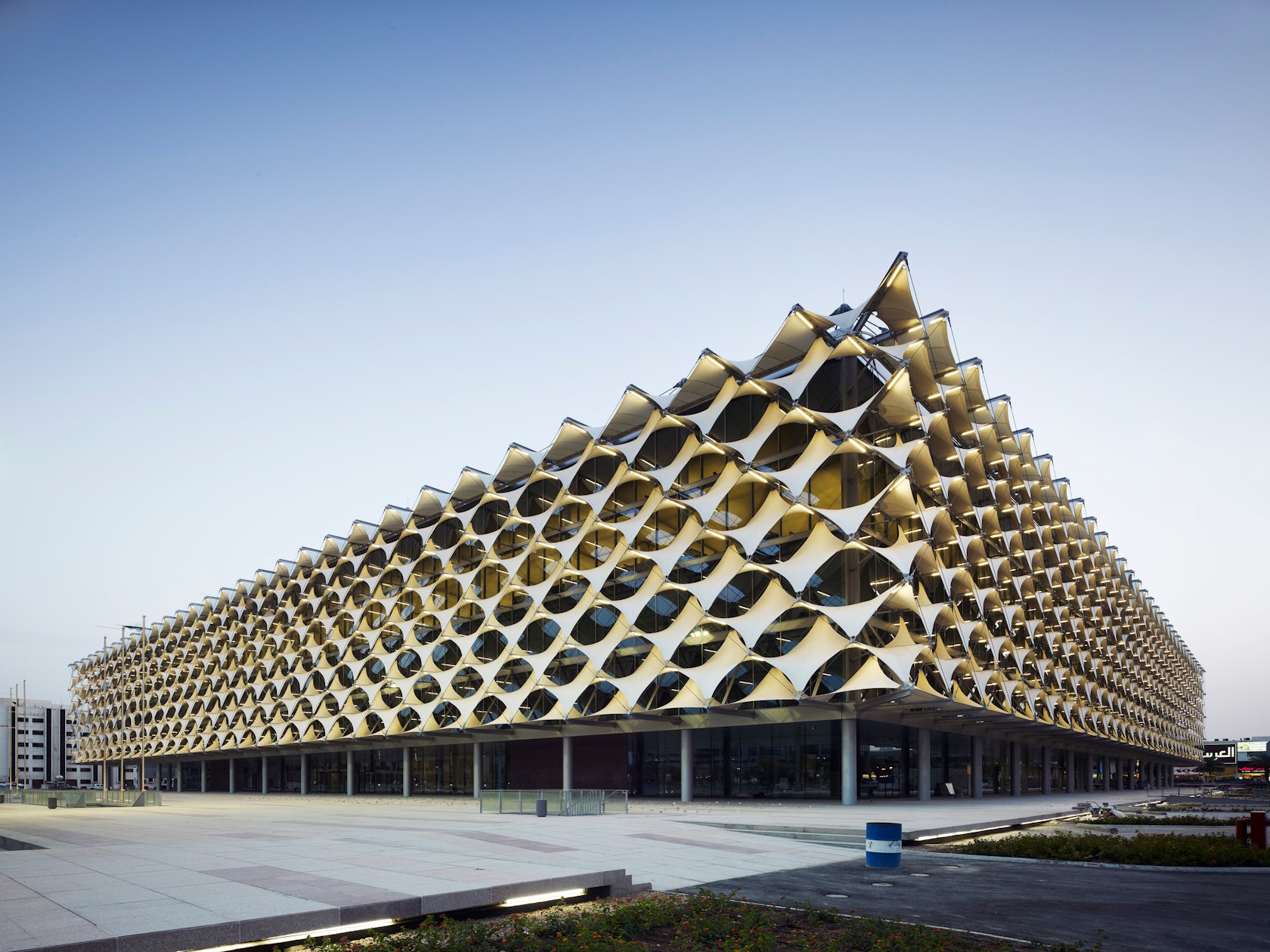
© Gerber Architekten

© Gerber Architekten
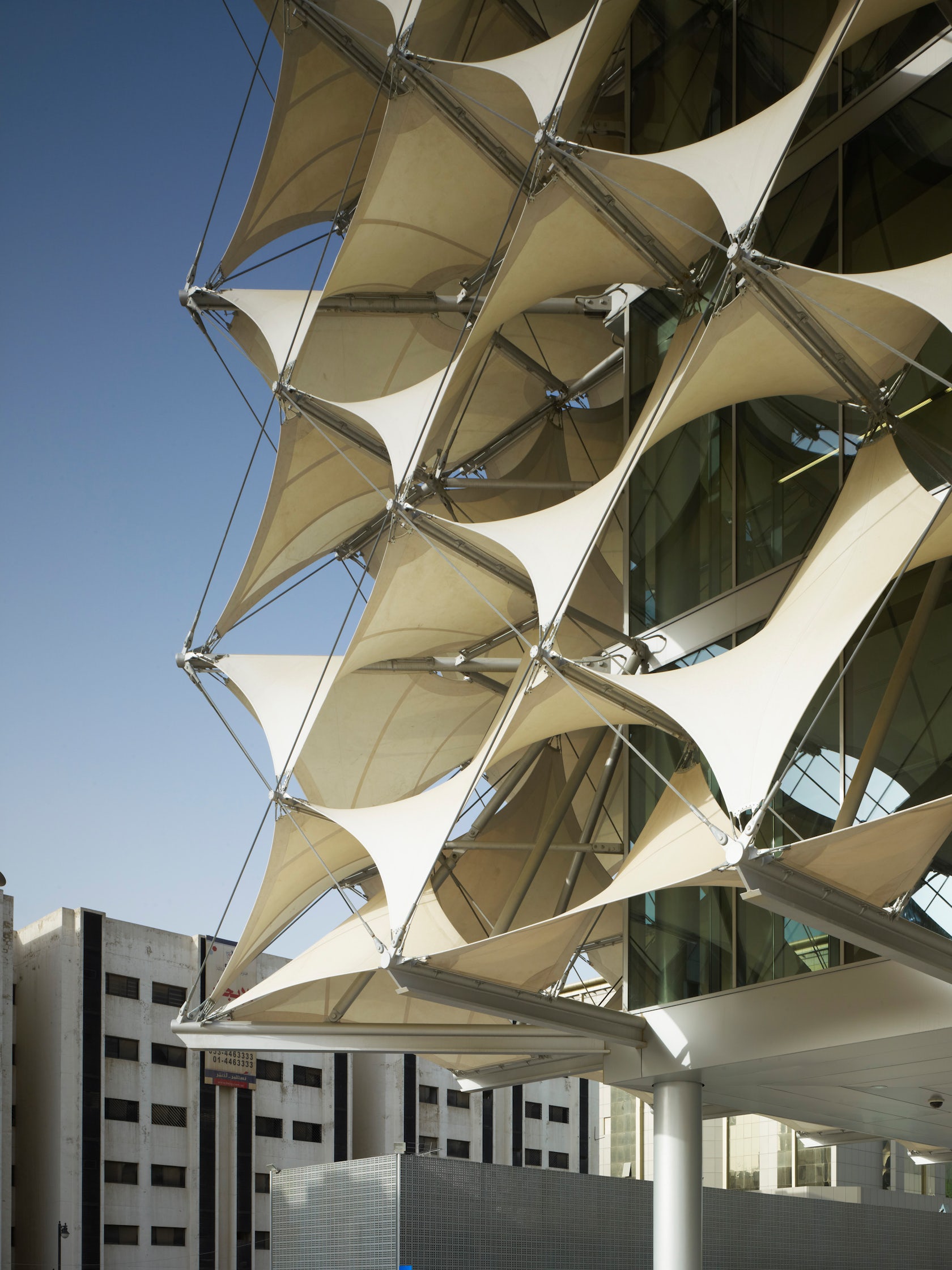
© Gerber Architekten
King Fahad National Library Riyadh by Gerber Architekten, Riyadh, Saudi Arabia
Representing a new center in Riyadh, the King Fahad National Library Riyadh links King Fahad Road and Olaya Street, the two main traffic axes of the capital of the Kingdom of Saudi Arabia. A building within a building, the library includes a façade made up of rhomboid textile awnings. These are supported by a tensile-stressed cable structure that allows light and views throughout the interior spaces.

© REX

Equator Tower by REX, Kuala Lumpur, Malaysia
Using a huge sun-shading device, REX designed the Equator Tower to expand during the day and close down at night. A tensile cable net acts like a sail in the tower, and it is designed to be a spectacle within Kuala Lumpur. The speculative proposal would include these large fabric sails which retract to a few floors in the building.

© magma architecture
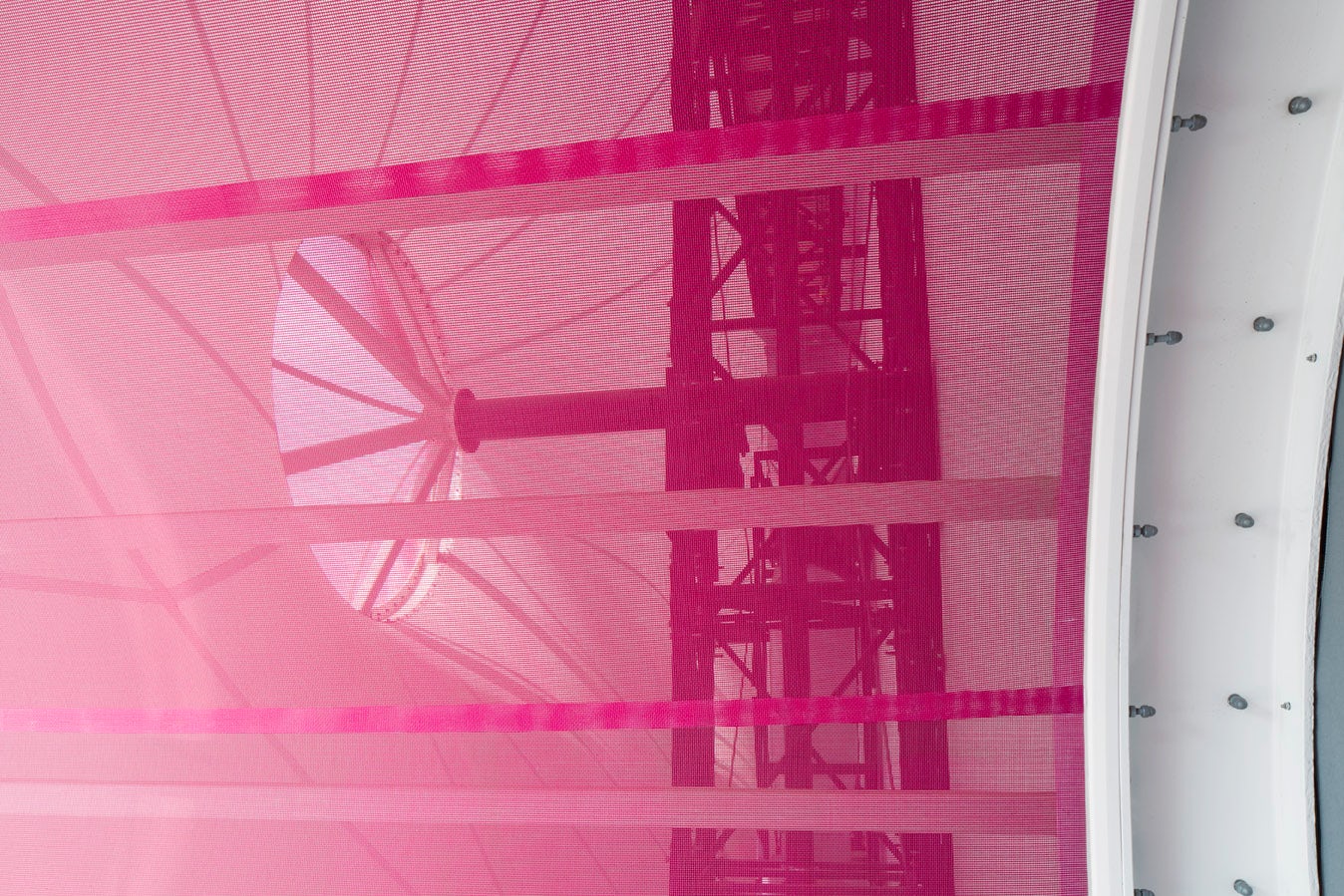
© magma architecture

© magma architecture
London Shooting Venue by Magma Architecture, London, United Kingdom
This shooting venue was designed for the 2012 Summer Olympics. The design includes colorful tensioning nodes and a membrane to create an experience of flow and precision. The temporary buildings make use of modular steel components for tensioning as well as allowing ventilation intake and circulation to occur.
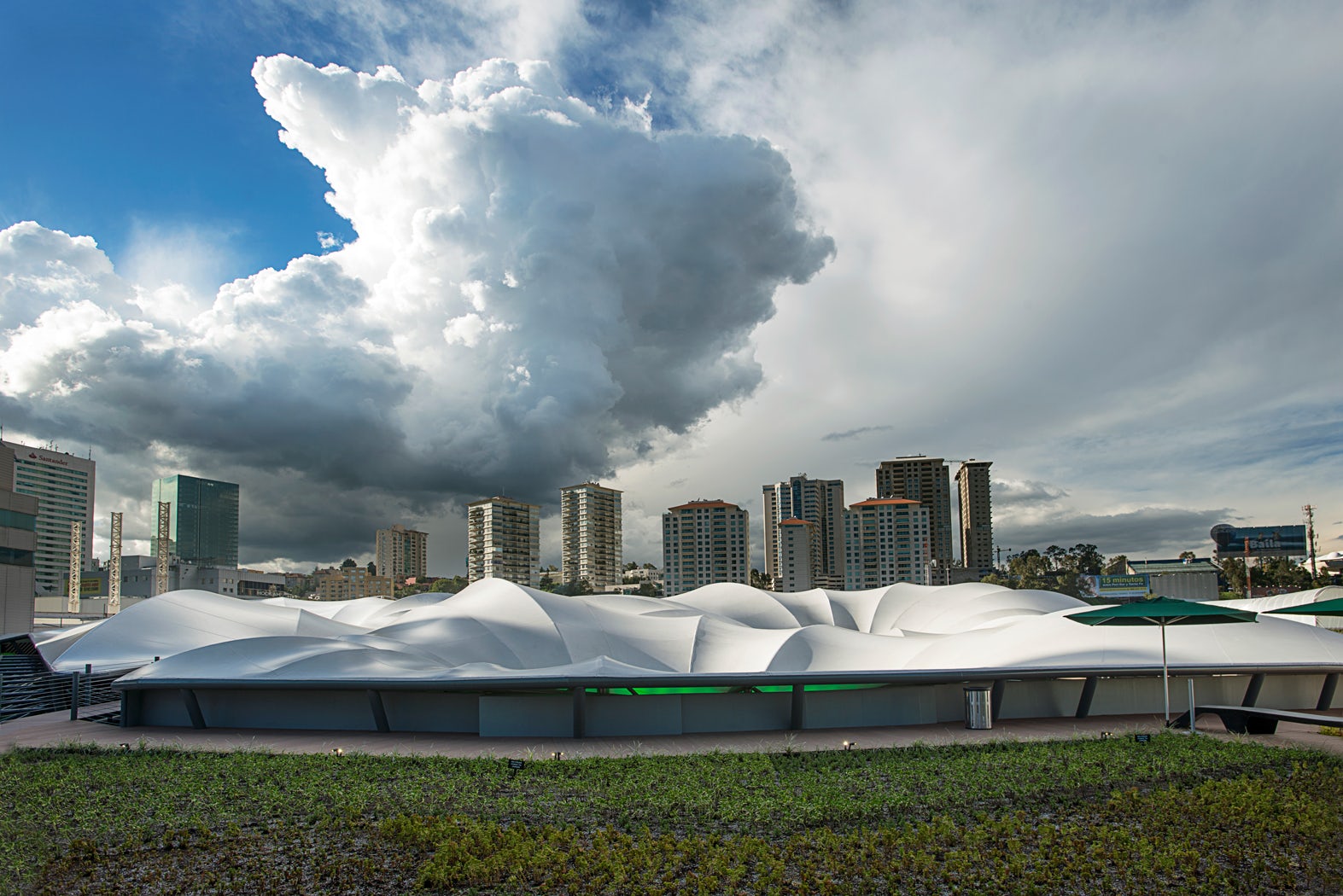
© Rojkind Arquitectos

© Rojkind Arquitectos
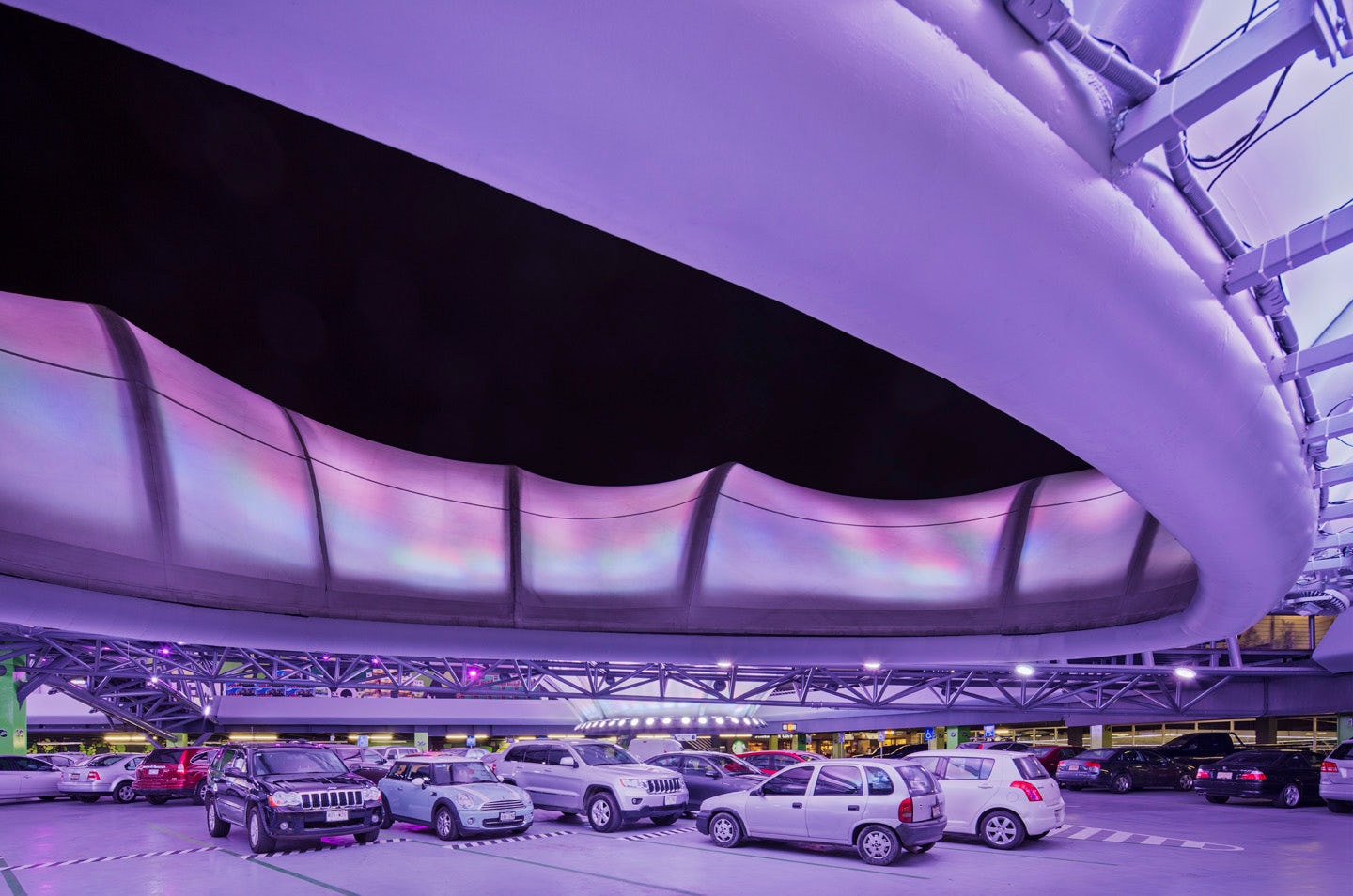
© Rojkind Arquitectos
Chedraui Supermarketby Rojkind Arquitectos, Nuevo México, Mexico
Situated on a complex site, the Chedraui Supermarket was designed with a unique program and aesthetic in the hopes of giving back to the community. It combines a rooftop terrace with an orchard and a market. Four large tensile structures are what protect the pathways to the orchard and the parking. They also provide a unique luminescence at night.
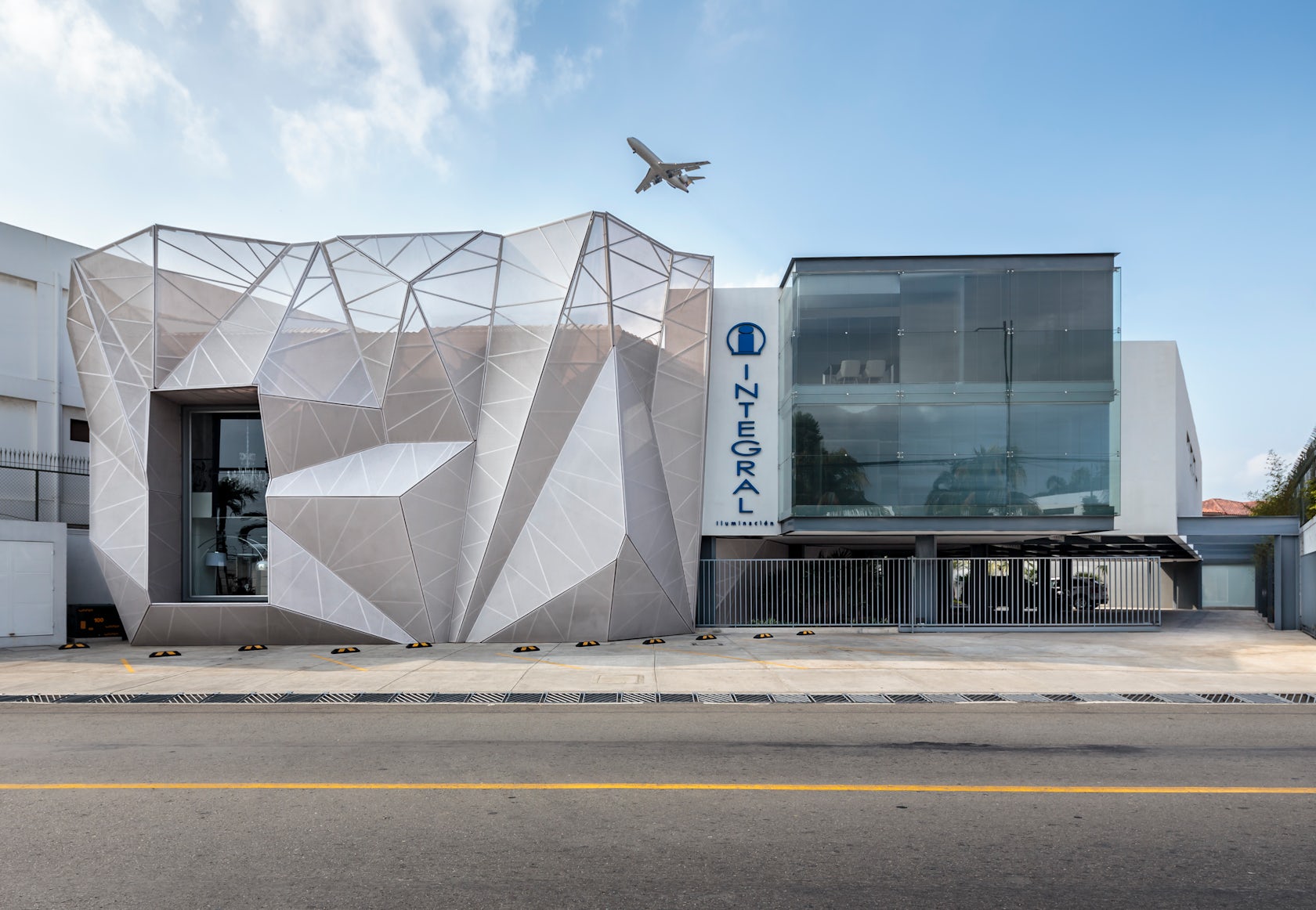
© SEBASTIAN CRESPO
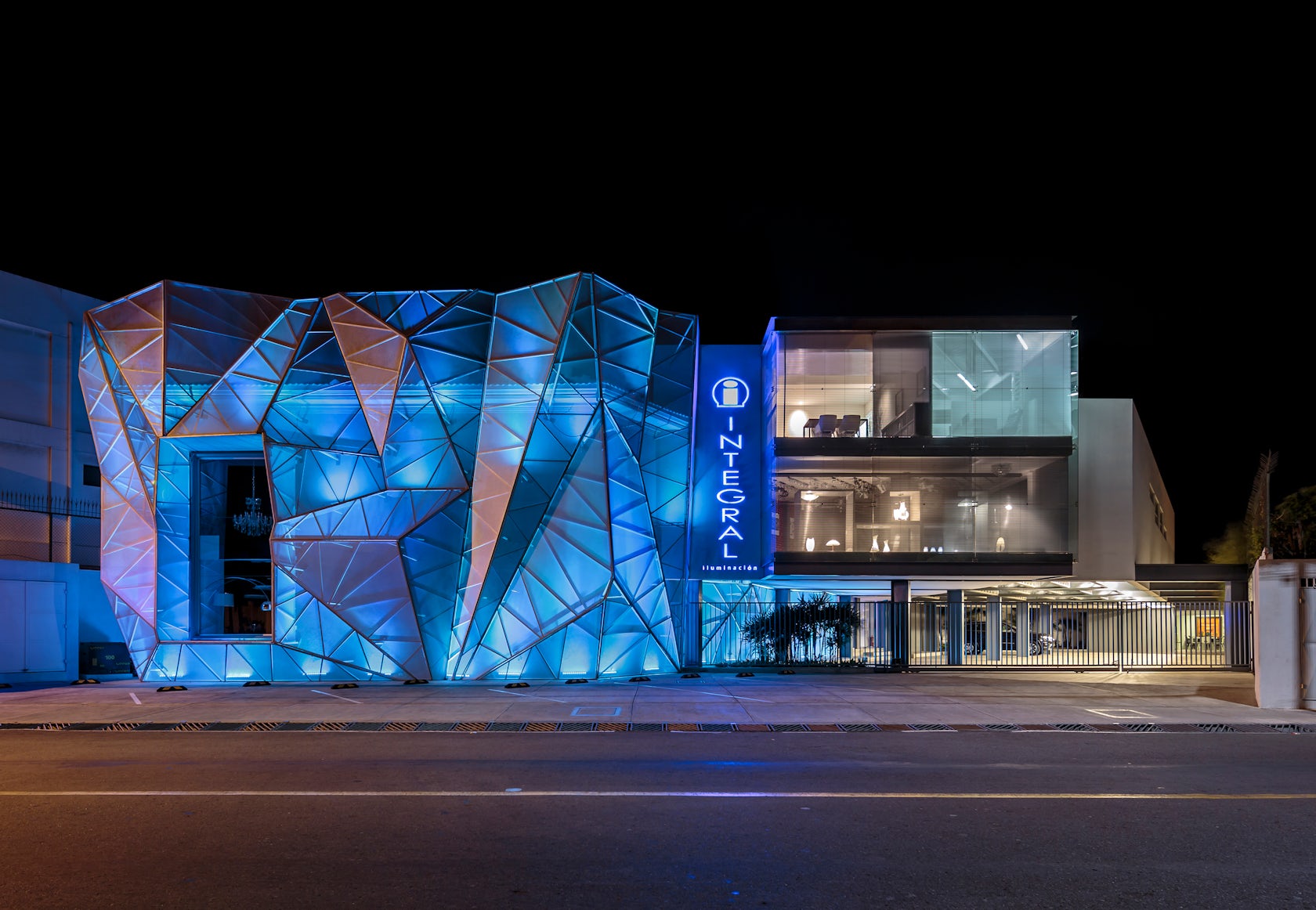
© SEBASTIAN CRESPO

© SEBASTIAN CRESPO
Integral Iluminacion Commercial Building by Jannina Cabal Arquitectos, Samborondon, Ecuador
A building to showcase lighting and automation systems, the design houses a three-story building, parking area, exhibition space, and employee space. The building merges two distinct elements; one side includes a geometric, tensile fabric façade, while on the other side, a clean glass prism remains exposed. The design changes greatly depending on the time of day and the light that passes through the transparency of the tensile façade.


